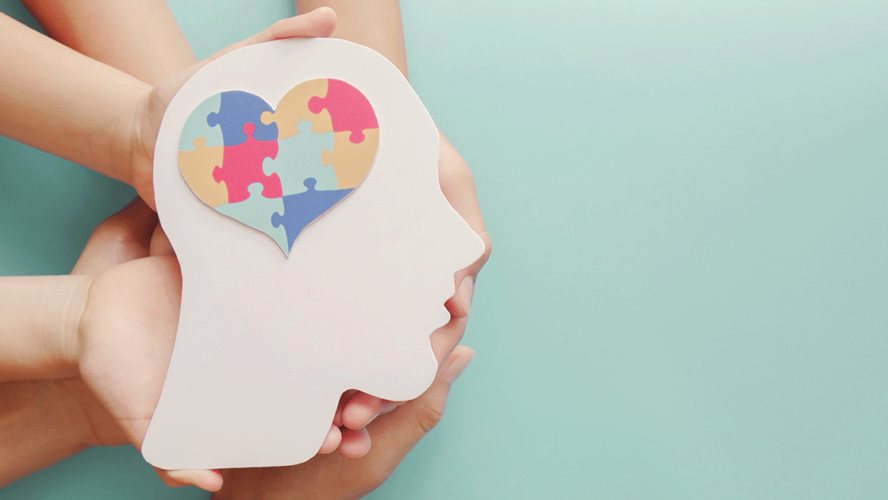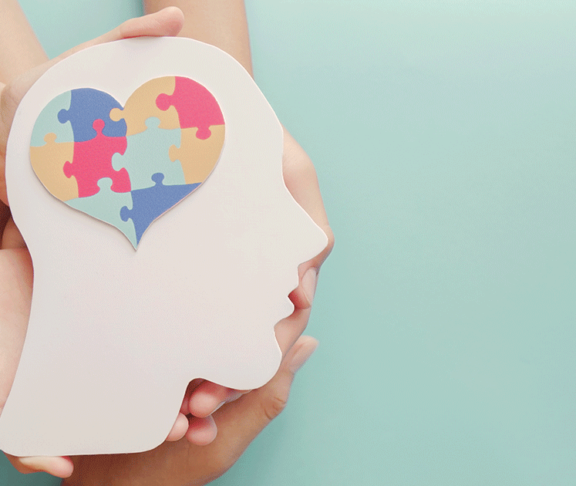Mental health and mental illness are often used interchangeably, but it’s important to note that they are not the same. We know that 5 in 5 people, that’s all of us, have mental health. However, 1 in 3 will experience a mental illness or substance use disorder in their lifetime.
Mental health is the state of our psychological and emotional well-being. It encompasses our emotions, feelings of connection, thoughts, and the ability to manage life’s highs and lows. Everyone throughout their lives will experience both positive and negative mental health.
Mental illness and substance use disorders, however, affect a person’s ability to function over a long period of time.1 They are caused by a complex interplay of genetic, biological, personality and environmental factors.2 They are characterized by alterations in thinking, mood or behavior causing significant distress and impaired functioning.
Having good mental health does not mean feeling happy all the time. In fact, it is perfectly normal to experience periods of poor mental health when navigating challenging life events and situations. Just as we take care of our physical health, there are things we can do to take care of our mental health.
We can look after our mental health by:
- Building and nurturing support networks: Feeling connected to others and to our community not only provides us with a sense of belonging but ensures we have people to lean on when we need to.
- Identify and feel our emotions: Being able to identify and experience the wide range of emotions that all humans go through and on top of that, managing them in a way that is respectful to you and others around you.
- Moving our bodies: Moving your body 20 minutes per day has been proven to decrease tension levels and improve anxiety, depression, dementia, cognition and quality of life.3
- Trying a new hobby or sport: Inviting fun and creativity into our routines can help minimize stress and reduce anxiety and depression. Make time for the things that bring you meaning and joy.
- Practicing mindfulness: Mindfulness is purposely bringing one’s attention to the present moment. Practicing mindfulness can help calm your mind, become more aware, and create better connections with yourself and others.
- Being kind to ourselves: While we can’t stop our minds from thinking – it’s simply impossible – we can change how we talk to ourselves. Take a moment and listen to your inner voice. What’s it telling you? Sometimes we don’t realize the amount of negative self-talk we engage in until we stop and listen. We could all benefit from growing our compassionate voice.
1 Ministry of Mental Health and Addictions. (2023, January 10). The difference between mental health and mental illness. The Difference Between Mental Health and Mental Illness | Wellbeing.gov.bc.ca. Retrieved April 12, 2023, from https://wellbeing.gov.bc.ca/understandingmentalhealth
2 Canada, P. H. A. of. (2022, June 3). Government of Canada. Canada.ca. Retrieved April 12, 2023, from https://www.canada.ca/en/public-health/ services/chronic-diseases/mental-illness.html
3 Canada, P. H. A. of. (2018, October 1). Government of Canada. Canada.ca. Retrieved April 12, 2023, from https://www.canada.ca/en/public-health/services/publications/ healthy-living/physical-activity-tips-adults-18-64- years.html


